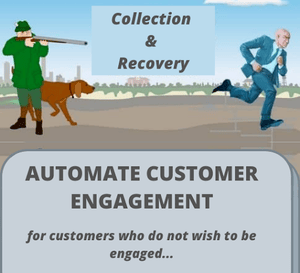
The focus of fintech and digital banking has been on payment apps, buy now pay later (BNPL), and instant approvals and disbursement, using innovations such as instant digital KYC and automated credit checks. But these new developments and innovation in lending haven’t much changed the other side of the banking business - collections and recovery.
The goal that collections executives face is getting a defaulter to commit to a “Promise to pay.”
It would be more efficient if the initial steps taken to secure a promise to pay were to be automated as well.
This is a list of five ways in which you can set up Promise to pay automation for a Debt collections department or recovery agency.
1. Timely reminder sequence before due date.
It’s customary to send upcoming repayment reminders a week or 10 days before it is due.
Instead of a simple message providing the date and amount, make it an informative and educational outreach. Include a payment link, and a detailed step by step guide on the repayment options.
Multiple messages via your app, email, SMS, automated voice call on the phone, and Whatsapp can include the context of the account in question, benefits of on-time repayment, and the penalties and interest that will kick in if the repayment due date is missed.
2. Automated multi-channel messaging for soft buckets.
For accounts where the repayment date is missed and standing instructions have failed to secure the payment by the end of the month, your collections process for the first two buckets or months after that can be made more effective with an automated drip sequence of multi-channel messages.
The goal is to get the defaulter to commit to a promise to pay via automated email, SMS, phone and Whatsapp messages. Customise the sequence to enable a collections executive from your contact centre to step in and follow up only after the customer commits to a date, or if they want to pay cash.
It can easily be made interactive based on the response of each recipient, with triggers for actions taken. For example, you can offer two choices - pay now or select a date. If it is the former, a payment link can be generated automatically and sent if the customer chooses that option.
If someone opens a mail and clicks on a payment link but does not complete the payment, a call can be automatically triggered to ask if they are facing any technical issues making the payment.
Don’t make your contact centre team waste their time on the initial outreach to defaulters. They should have to step in only after a promise to pay is secured.
Find out more about automating collections messaging:
3. API-based integration for hard buckets.
How do you share data and keep track of progress for the latest set of defaulters falling into the hard buckets, where the names must be handed over to your recovery team or agency partners.
It’s very easy to offer safe and secure API-based callback integration for sharing account data with specific designated members from recovery.
Lists of defaulters to follow-up with can be distributed to each member based on location and other customisable factors.
The progress, speed of response to an account as soon as it is assigned, and the performance of each member and region, can all be tracked using a callback app. You can also send out personalised messaging to recovery team members in the 3-5 month period of an account in default, to ensure that it is closed before it goes beyond the 5-month default threshold after which the lender has to write it off the books as per RBI rules.
4. Context and location-based ads on mobile.
Making defaulters aware of their obligation towards the lender at the right moment can have a very positive impact.
Wouldn’t it be great if your borrowers are gently encouraged to pay off their pending dues instead of buying stuff online?
Context and location-based display ads and SMS campaigns on mobile (using behavorial ad networks or in partnership with telecom providers) are far more efficient than your usual email or SMS.
5. Social media retargeting campaigns using custom audiences.
It can be one of these three IDs:
Apple's Advertising Identifier (IDFA);
Android's Advertising ID; or
Facebook App User IDs
This helps customize and personalize Facebook ad messaging to your existing app users.
Learn more about retargeting using Mobile Advertising IDs on Facebook and Google.